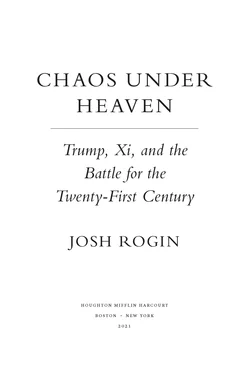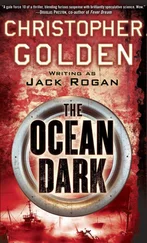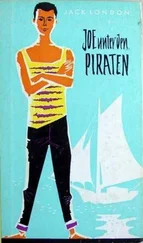In their conversation, the official said, Xi told Trump he opposed the decision to close US borders to flights from China. Trump asked Xi to allow US CDC officials into Wuhan, which by that point had been locked down. Xi demurred and asked Trump not to take any more excessive actions that would create further panic, in essence asking him to downplay the threat. Xi also told Trump that China had the coronavirus outbreak under control, that the virus was not a threat to the outside world, and that it was sensitive to temperature and therefore would likely go away when the weather got warmer. None of these things were true, but Trump believed them—or wanted to believe them—enough to start saying them out loud, both internally and otherwise. “That was a soothing call,” said the official, who paraphrased Xi’s message as Nothing to see here, we’ve got this handled, don’t overreact. “Xi was downplaying the whole thing.” It was a message that Americans would soon be hearing directly from the mouth of their own president.
“Now, the virus that we’re talking about having to do—you know, a lot of people think that goes away in April with the heat—as the heat comes in,” Trump said on February 10 at a White House meeting with state governors, not revealing that when he said, “a lot of people,” he was referring to the Chinese president. As the staff battled among itself about how to deal with the emerging crisis, Xi’s assurances had helped to convince the US president to misrepresent the danger—and helped convince many Americans that the pandemic would be, at most, a short-lived threat.
All the while, scientists and government officials the world over were racing to get a clearer sense of what they were truly dealing with. The day after Trump spoke those words to governors making response policy for states all across the country, the international committee tasked with naming new viruses announced that it had dubbed the novel coronavirus “severe acute respiratory syndrome coronavirus 2 (SARS-CoV-2),” a nod to its genetic similarities to the original SARS virus. At the same time, the WHO named the disease caused by the new virus: COVID-19.
As COVID-19 cases in the United States mounted, the Trump team seemed to realize that they had been duped and began increasingly to point their fingers at China. It was important to make the origin of the outbreak clear, they reasoned. But at this stage, the State Department wanted to blame China without setting themselves up for accusations that they were stoking racism against Asians or Asian Americans. So after some deliberations among government agencies, it was determined that Mike Pompeo would use the term “Wuhan virus,” which was determined to be strong but not too inflammatory.
But all bets were off after Chinese diplomat Zhao Lijian, a particularly aggressive foreign ministry spokesman, tweeted on March 12 that perhaps the US Army had brought the virus into Wuhan. In his press conference on the pandemic on March 18 at the White House, Trump ignored the cautions of his staff and called COVID-19 “the Chinese virus,” something he would go on to do over two dozen times. The propaganda war was on, with the two countries’ officials insulting each other in public and private.
Privately but explicitly, Chinese diplomats threatened US State Department officials that they would cut off their exports of medical supplies to the United States if Washington wasn’t careful about the charges that it leveled against Beijing in this war of words. This was a threat the Trump administration had to take seriously. Beijing already had shown that it was willing to use medical supplies to reward or punish countries based on how willing they were to shield China from criticism—effectively blackmailing other governments by threatening to leave their citizens to suffer. Beijing was seeking to snuff out any discussion of the virus’s origins that put any responsibility on China, along with any criticism of its domestic response and any allegation that it was hiding or misrepresenting information about the virus. In a move that US officials saw as punitive, Beijing had halted exports of items like face masks, even when they were made by American companies like 3M, which had factories inside China—prompting Navarro to comment on Fox Business that China had moved to “nationalize effectively 3M, our company.” The Trump administration had to tread carefully, negotiating behind the scenes rather than calling out Beijing at the cost of American lives.
The staff set up another call between Trump and Xi for March 26. In this call, Xi told Trump that China was now on the other side of the peak and case numbers were dropping significantly. He claimed that new cases in China were only from people who imported the virus from other countries. Xi didn’t directly threaten to hold back personal protective equipment if Trump continued to criticize China, but he said it obliquely, telling the US president there was a cause and effect between the tone of US statements and Chinese cooperation. Xi also claimed that herbal medicine was very effective against the virus.
The two leaders agreed to a truce. They would tell their officials to halt the blame game and focus on cooperation to fight the virus. But the fact that Beijing had made the threat, and the grim reality of the controls that China was already putting on American companies’ factories there, convinced everyone in the White House that US dependence on critical supply chains in China was a huge problem. “We’ve got to keep our mouths shut until the planes from China get here,” a senior official told me at the time. “But let me tell you, after this is over we are going to make sure we never find ourselves in this situation again.”
The truce lasted for about two weeks. Without intending to, I would help to hasten its demise.
The Wuhan Cables
In late 2017, top health and science officials at the US embassy in Beijing had attended a conference in the Chinese capital. There, they saw a presentation on a new study put out by a group of Chinese scientists, including several from the WIV, in conjunction with the US National Institutes of Health. The NIH had funded a number of projects that involved the WIV scientists, including much of the Wuhan lab’s work with bat coronaviruses, as part of the international effort to prevent the next SARS-like pandemic by predicting how it might emerge. The new study was entitled “Discovery of a Rich Gene Pool of Bat SARS-Related Coronaviruses Provides New Insights into the Origin of SARS Coronavirus.”
These researchers, the American officials learned, had found a population of bats from caves in Yunnan Province that gave them insight into how SARS coronaviruses originated and spread. But what caught the eye of the US officials was this line: “Cell entry studies demonstrated that three newly identified SARSr-CoVs with different S protein sequences are all able to use human ACE2 as the receptor, further exhibiting the close relationship between strains in this cave and [the original 2002–3] SARS-CoV.”
The ACE2 receptor is an enzyme attached to the cell membranes in the lungs, heart, arteries, kidneys, and intestines. It was the primary entry point for the original SARS coronavirus when infecting human lungs, because of a rare, simple, and exquisitely effective compatibility between the virus and the human body: the S protein in the virus linked with the ACE2 receptor in the lung cells of the human victims, allowing the virus to inject genetic material into the host cell, where the DNA replicates and then moves on to infect other cells. Now, these Wuhan scientists presented a paper showing they had found three new viruses that could do the same thing. The researchers boasted that they may have found the cave where the original SARS coronavirus originated. But all the US diplomats cared about was that three new viruses had been discovered that had been found to be potentially dangerous for humans—and that these viruses were now in a lab with which they were largely unfamiliar.
Читать дальше











